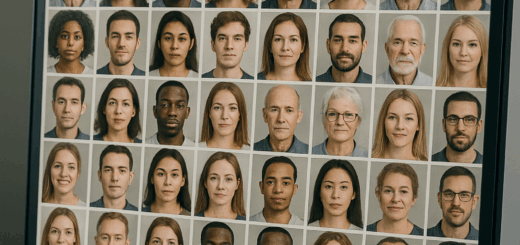How iBeta Dataset Works for Liveness Detection
The iBeta dataset plays a central role in evaluating whether biometric systems can correctly identify live human users and reject spoof attempts. This capability is known as liveness detection. By combining real biometric data with carefully constructed spoof samples, the dataset provides a standardized, repeatable, and impartial framework for testing biometric technologies.
Let’s break down how the iBeta dataset is designed and how it functions in liveness detection evaluation.

1. What Is Liveness Detection?
Liveness detection is a biometric system’s ability to confirm that the input comes from a real, present human being, not from:
- A photo or video replay
- A mask or 3D model
- A synthetic fingerprint or mold
- An AI-generated deepfake
Without effective liveness detection, biometric systems are vulnerable to presentation attacks (PAs) — fraudulent attempts to impersonate someone using fake biometric traits.
2. Role of the iBeta Dataset in Liveness Detection
The iBeta dataset ensures that liveness detection is tested under controlled, repeatable laboratory conditions. Its purpose is to:
- Provide Real Samples: Genuine biometric data from volunteers (faces, fingerprints, irises).
- Simulate Spoofs: Attack artifacts like printed images, masks, or fake fingerprints.
- Challenge the System: Ensure it correctly rejects spoof attempts without rejecting genuine users.
- Measure Performance: Provide quantitative metrics like False Accept Rate (FAR), False Reject Rate (FRR), and Spoof False Accept Rate (SFAR).
3. How the Dataset Is Built
The construction of the iBeta dataset follows strict guidelines to ensure fairness and consistency:
- Volunteer Recruitment
- Collects genuine biometric samples from a diverse group of subjects.
- Ensures variation in age, skin tone, facial features, and conditions.
- Collects genuine biometric samples from a diverse group of subjects.
- Spoof Artifact Creation
- Engineers construct fake samples based on volunteer data.
- Level 1: low-cost, everyday spoofs (photos, video replays, paper cutouts).
- Level 2: high-effort, advanced spoofs (3D masks, silicone molds, specialized materials).
- Engineers construct fake samples based on volunteer data.
- Balanced Dataset Composition
- Combines genuine and spoof data to simulate real-world authentication attempts.
- Ensures that test results are representative and unbiased.
- Combines genuine and spoof data to simulate real-world authentication attempts.
4. Testing Workflow Using iBeta Dataset
The iBeta liveness detection evaluation process typically looks like this:
- System Submission: Biometric system is provided to the lab.
- Dataset Application: iBeta uses its internal dataset to run test scenarios.
- Presentation Attacks: Spoof attempts are carried out with controlled artifacts.
- Live Authentication: Genuine subjects provide real biometric inputs.
- Results Analysis: FAR, FRR, and SFAR are calculated.
- Certification Decision: If the system resists spoof attempts (0% acceptance at Level 1), certification is granted.
5. Examples of How Dataset Challenges Liveness
The dataset is deliberately varied to ensure that liveness detection cannot rely on a single weak safeguard. For instance:
- Printed Photos test whether the system can detect flat, 2D surfaces.
- Video Replays challenge motion detection algorithms.
- Masks & 3D Models probe depth and texture analysis.
- Synthetic Fingerprints test sweat pore, capacitance, and sub-dermal detection.
- Infrared & AI Spoofs (future levels) challenge multi-spectral and AI-driven defenses.
6. Evaluation Metrics
During testing, the iBeta dataset helps calculate industry-standard metrics:
| Metric | Definition | Goal |
|---|---|---|
| FAR (False Accept Rate) | % of unauthorized users incorrectly accepted | As close to 0% as possible |
| FRR (False Reject Rate) | % of genuine users incorrectly rejected | Must remain low for usability |
| SFAR (Spoof False Accept Rate) | % of spoof attempts incorrectly accepted | 0% required at Level 1 certification |
These metrics provide quantifiable proof of a system’s security and usability.
7. Strengths of the iBeta Dataset for Liveness Testing
- Standardization: Every vendor faces the same dataset, ensuring fairness.
- Realistic Attacks: Spoofs mimic real-world threats from both amateurs and skilled forgers.
- Neutral Testing: Dataset is controlled by iBeta, preventing vendor manipulation.
- Regulatory Compliance: Aligned with ISO/IEC 30107-3 and FIDO standards.
- Adaptability: Continuously updated to include new attack types.
8. Limitations and Considerations
While powerful, the iBeta dataset is not perfect:
- Closed Access: Vendors cannot train on it beforehand.
- Scope-Restricted: Focused primarily on PAD; does not cover broader biometric recognition performance.
- Periodic Updates Needed: Attack vectors evolve quickly, requiring constant dataset updates.
9. Future Enhancements
As biometric security evolves, the iBeta dataset is likely to expand with:
- AI-generated deepfake spoofs to test video and voice biometrics.
- Behavioral biometrics (typing, gait, mouse movements).
- Bias testing datasets to ensure equal performance across demographics.
- Cross-modality attacks where multiple biometric spoof types are combined.
10. Related Topics
- How the iBeta dataset works
- iBeta dataset for liveness detection
- presentation attack dataset
- ISO/IEC 30107-3 liveness detection
- iBeta PAD testing dataset
- genuine vs spoof dataset
- FAR FRR SFAR testing
- biometric liveness detection dataset
Conclusion
The iBeta dataset is the backbone of liveness detection evaluation, ensuring that biometric systems can resist both simple and sophisticated spoofing attacks. By blending genuine biometric samples with realistic presentation attacks, it provides a neutral, repeatable, and internationally recognized standard for certification.
For vendors, success in iBeta testing means more than passing an exam — it signals to the world that their biometric solution is secure, reliable, and ready for real-world use.
FAQs
It provides real and spoofed biometric samples to test whether systems can accurately detect genuine users.
It prevents fraud by ensuring that only real, live users can authenticate, not fake copies or photos.
The dataset challenges biometric systems with spoof attacks to confirm their PAD effectiveness.
iBeta testing is highly reliable because it follows ISO/IEC standards for biometric security.
Yes, iBeta testing covers multiple biometric modalities, including face, fingerprint, and iris recognition.


